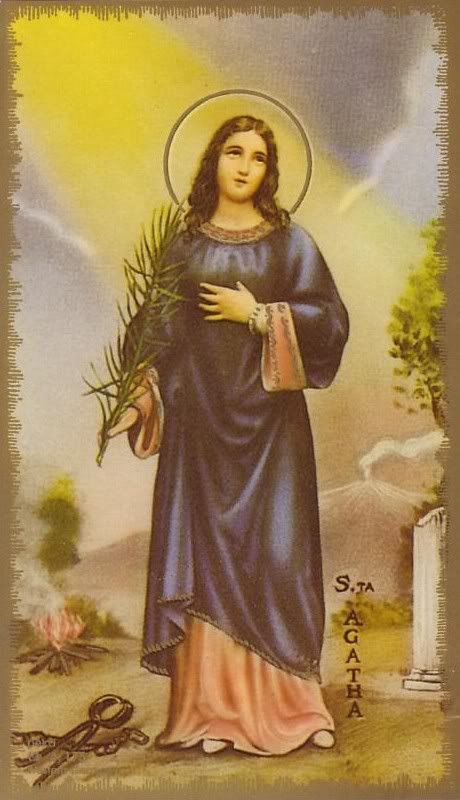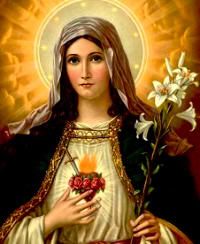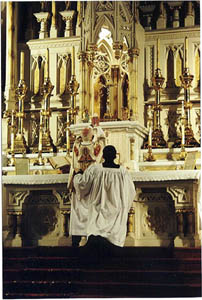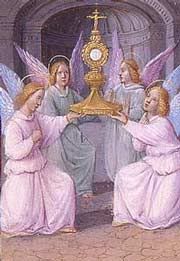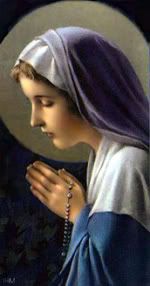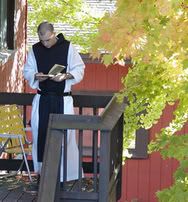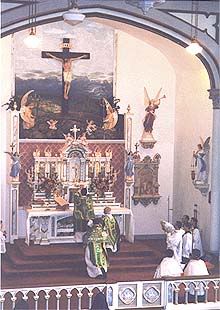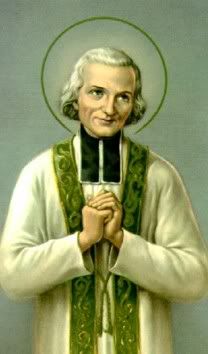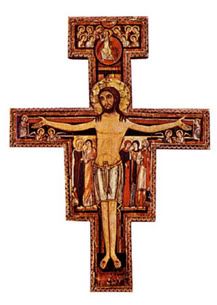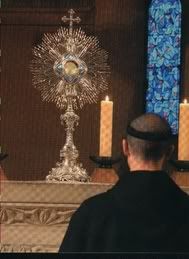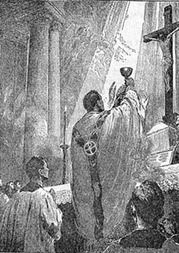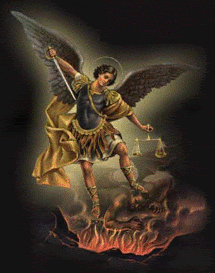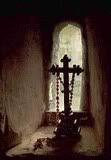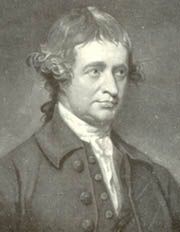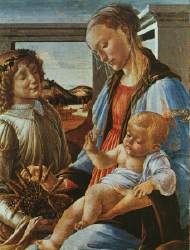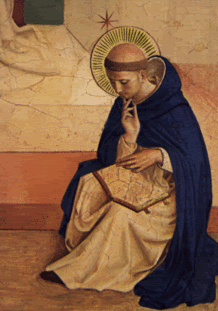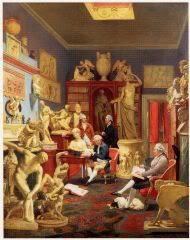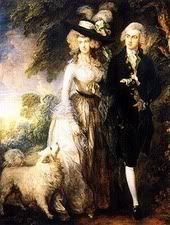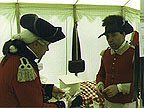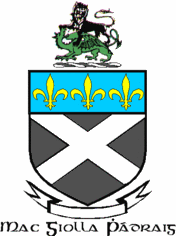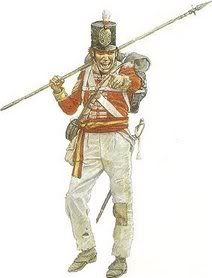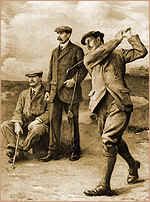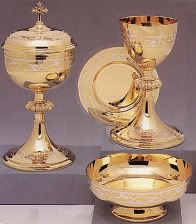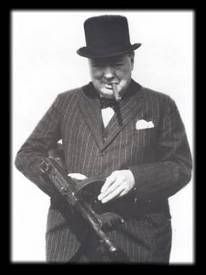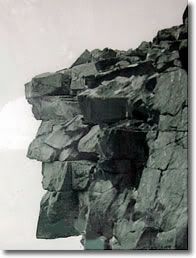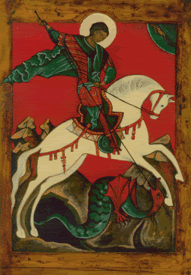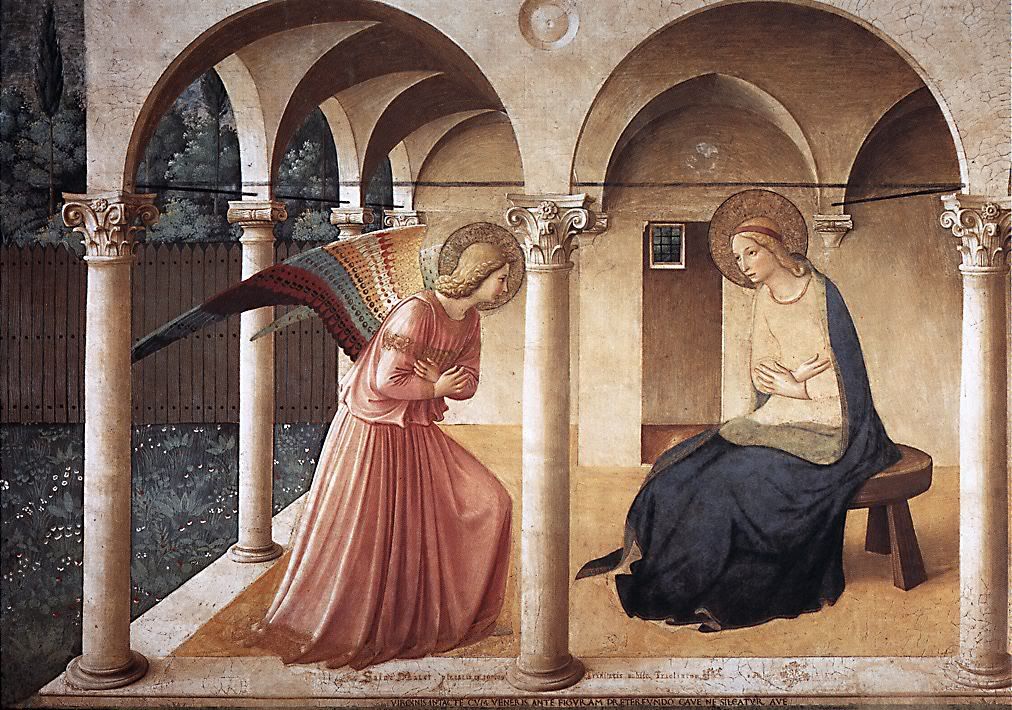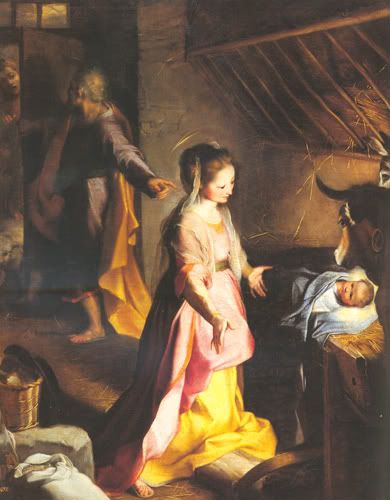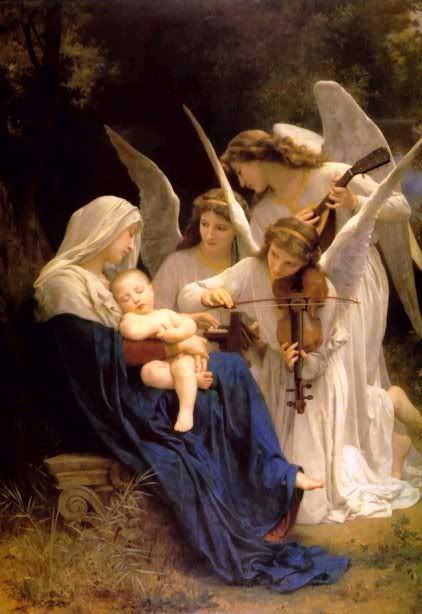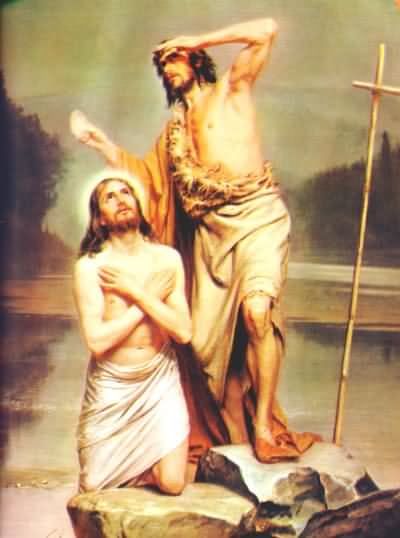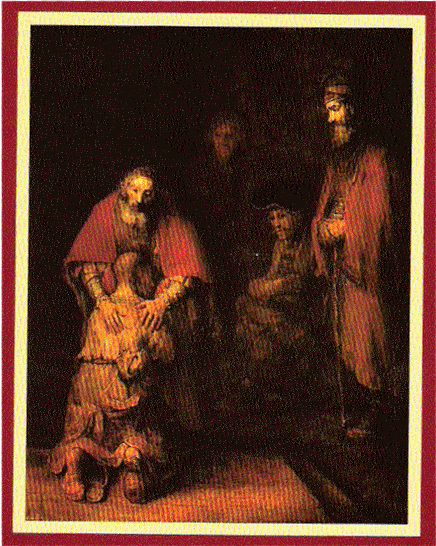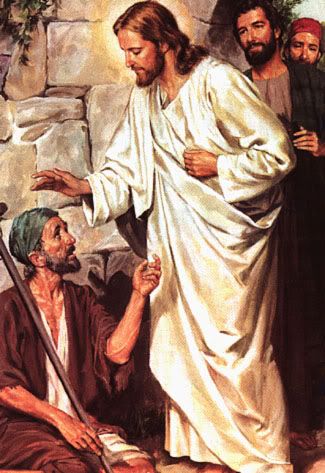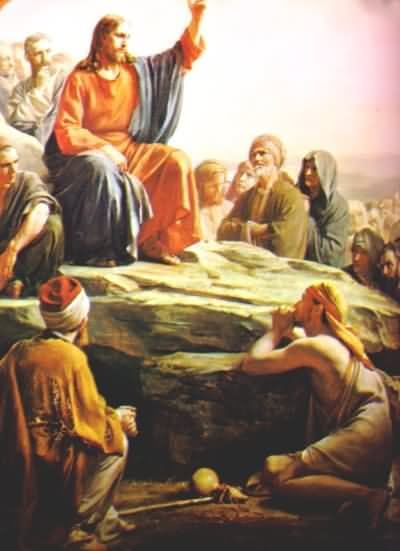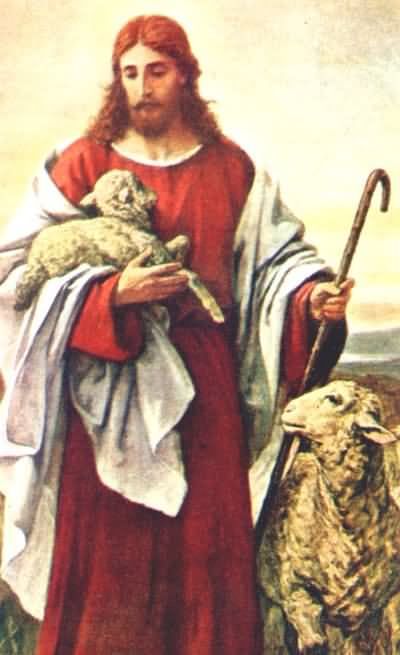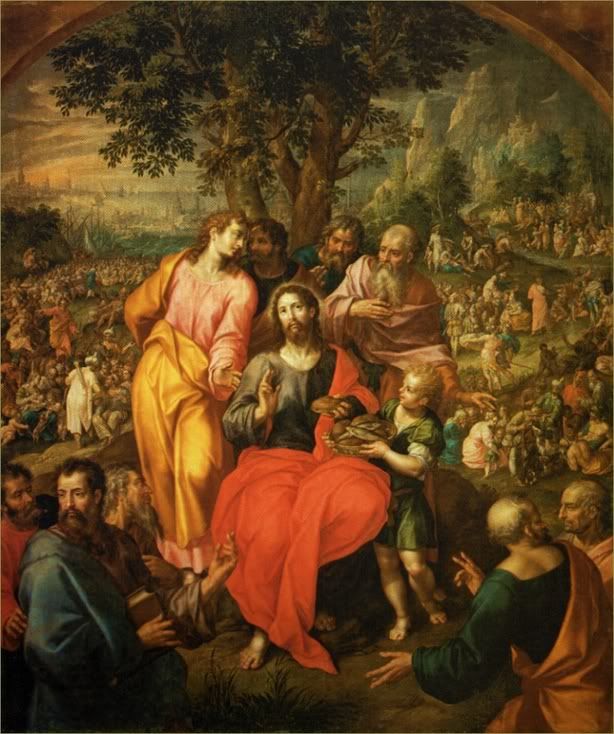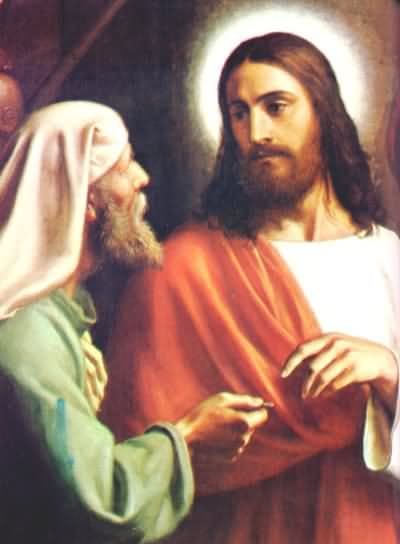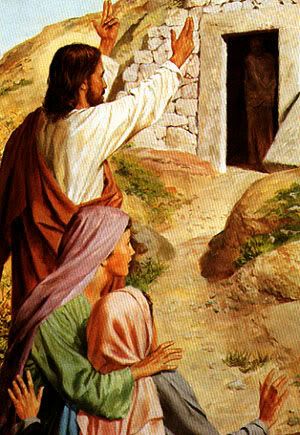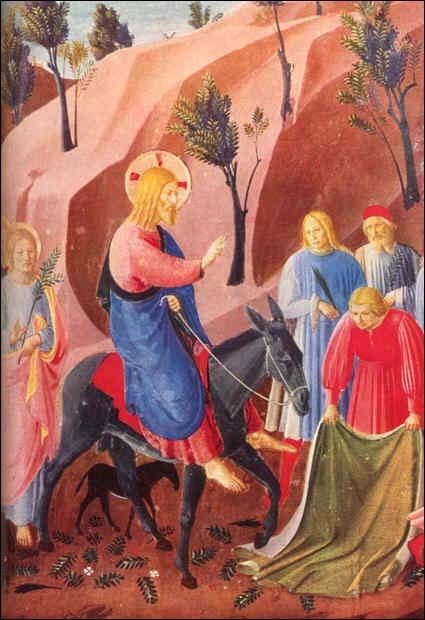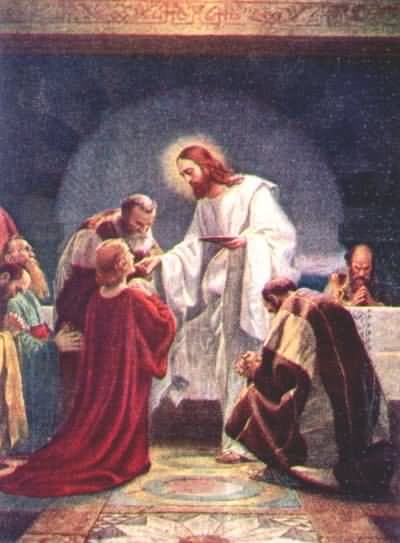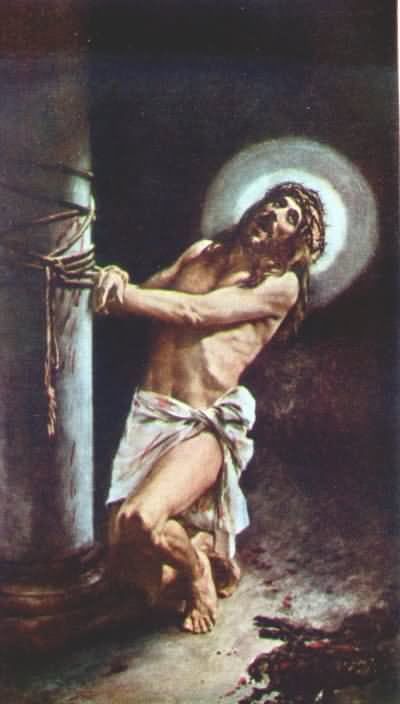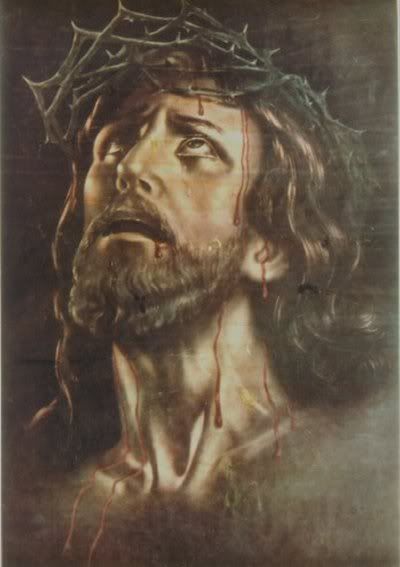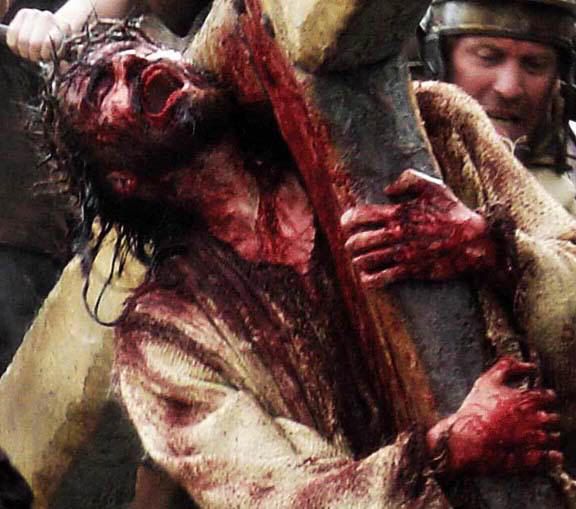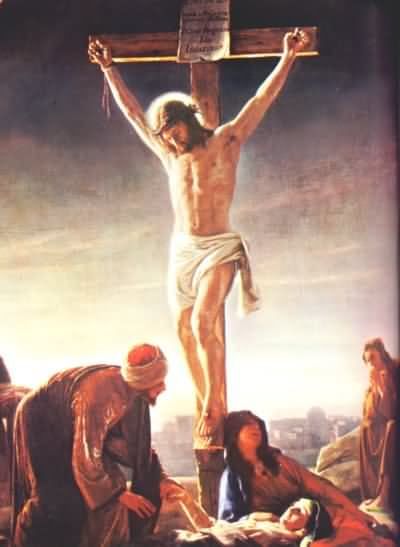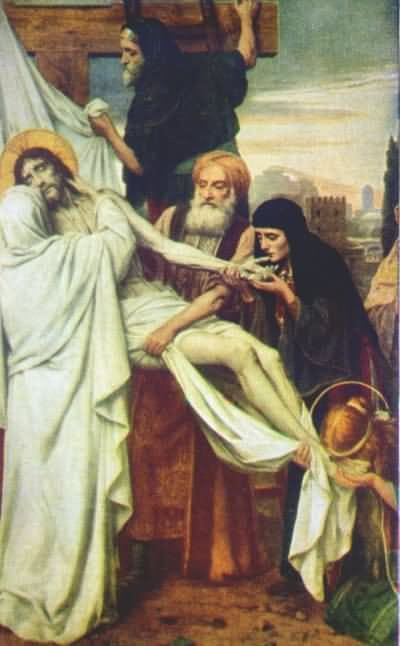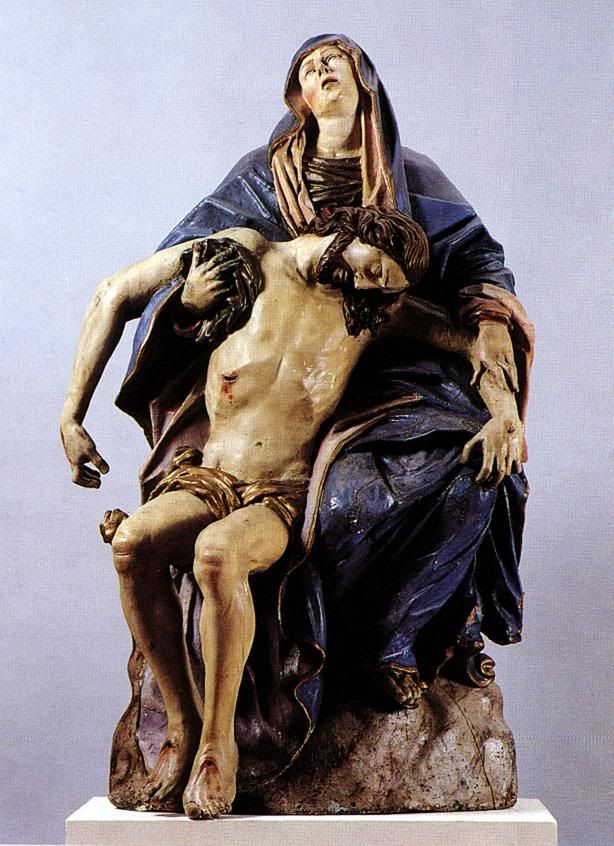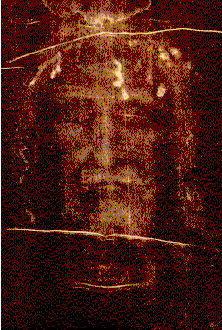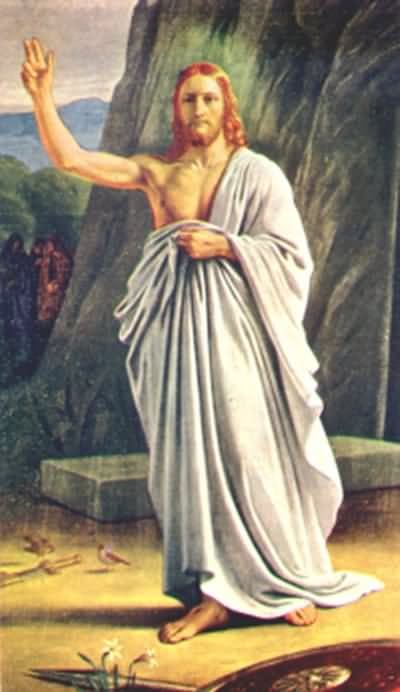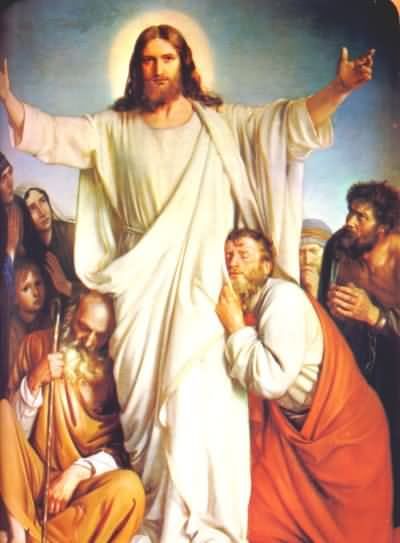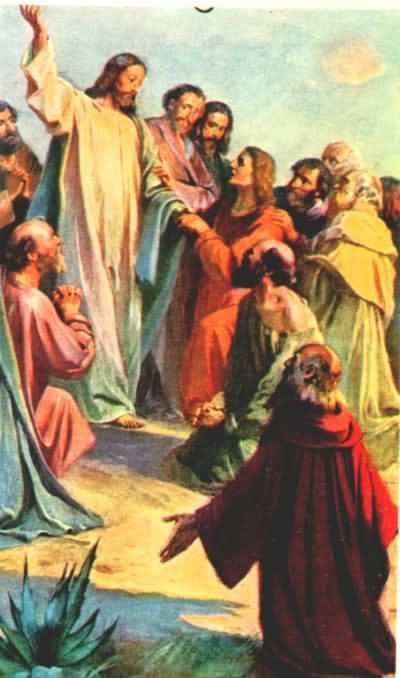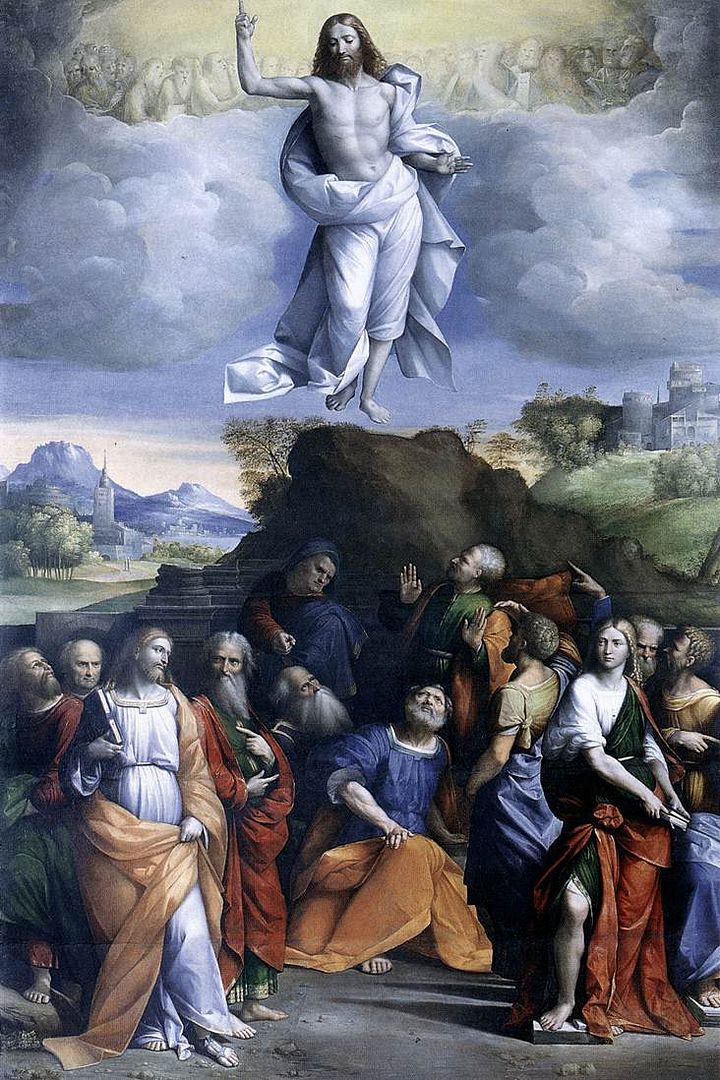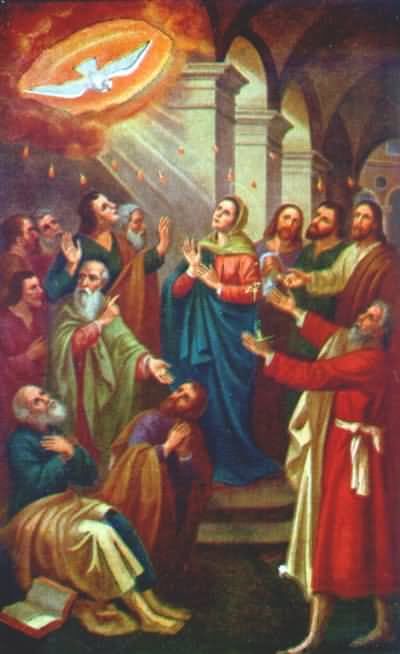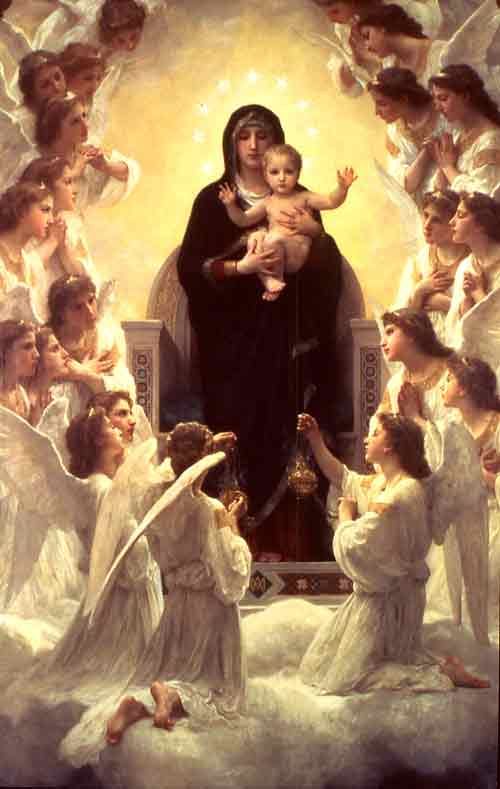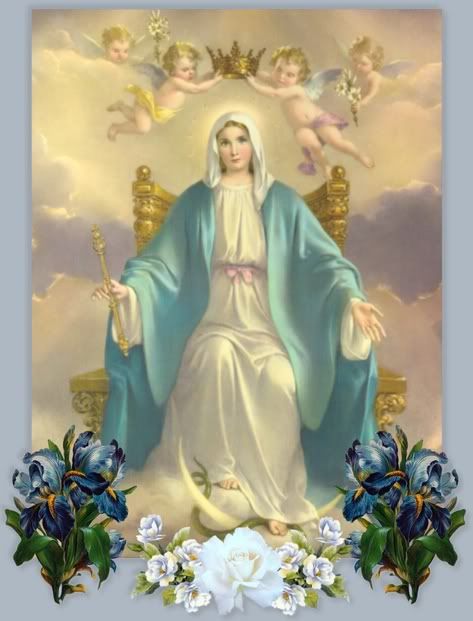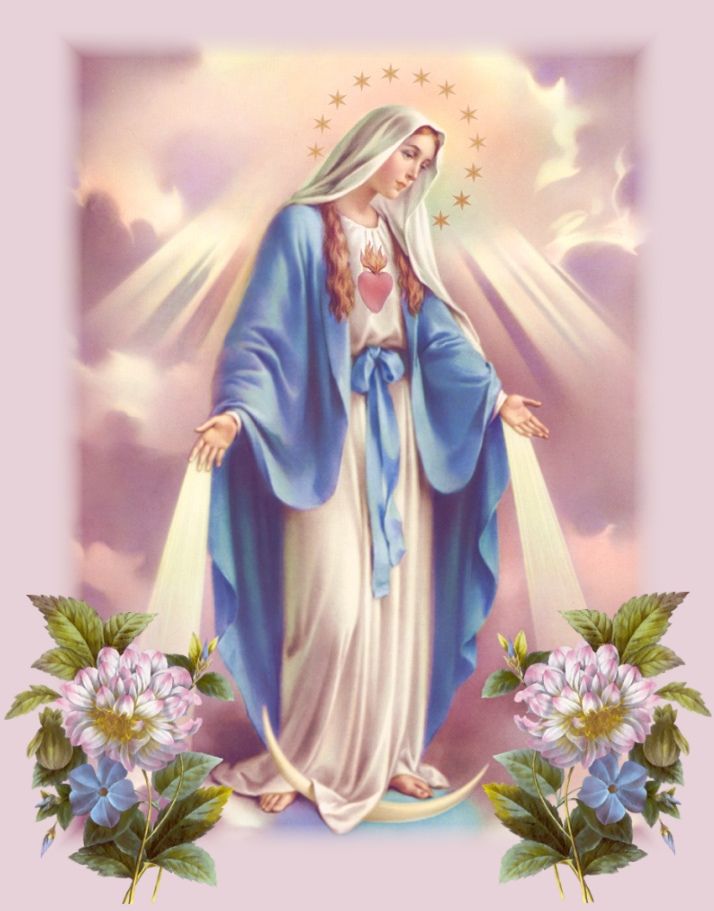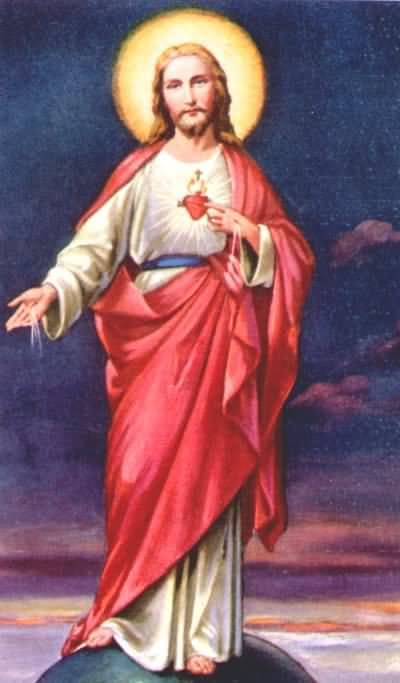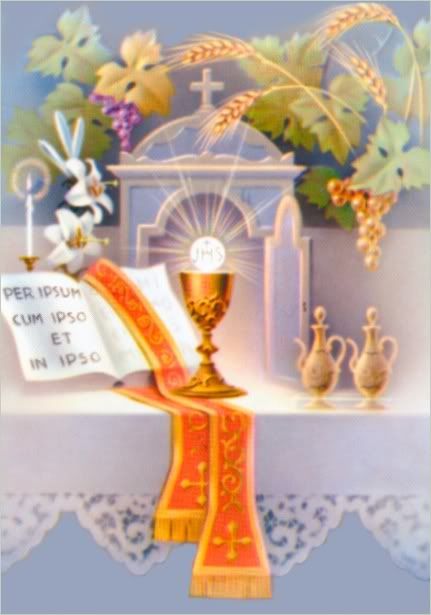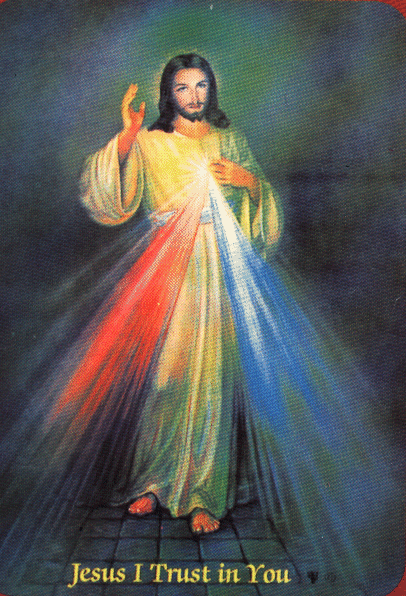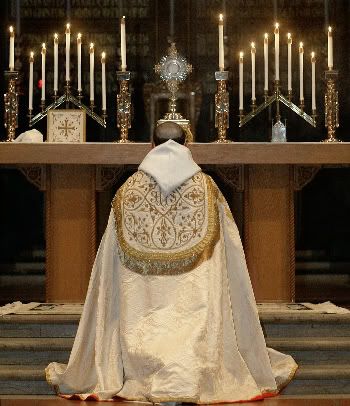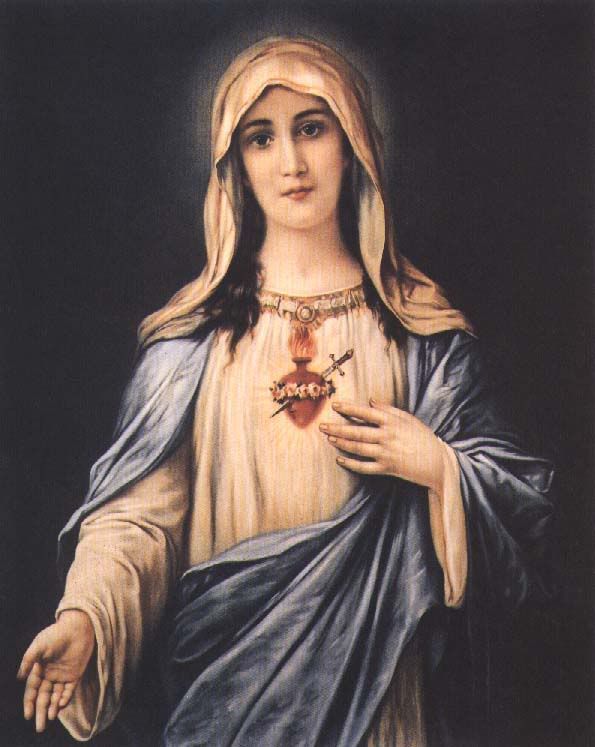Saturday, February 05, 2011
Our Blessed Lady's Saturday

Ave, Regina caelorum,
Ave, Domina Angelorum:
Salve, radix, salve, porta,
Ex qua mundo lux est orta:
Gaude, Virgo gloriosa,
Super omnes speciosa,
Vale, o valde decora,
Et pro nobis Christum exora.
V. Dignare me laudare te, Virgo sacrata.
R. Da mihi virtutem contra hostes tuos.
Oremus
Concede, misericors Deus, fragilitati nostrae praesidium; ut, qui sanctae Dei Genetricis memoriam agimus; intercessionis eius auxilio, a nostris iniquitatibus resurgamus. Per eundem Christum Dominum nostrum. Amen.
The daily Marian Antiphon changed at Candlemas from the Alma Redemptoris Mater to the Ave, Regina Caelorum.
Labels: Our Blessed Lady
Saint Agatha
Friday, February 04, 2011
Friday At the Foot Of the Cross

Prayer by Saint Alphonsus de Liguori:
O infinite love of Jesus, worthy of infinite love! Ah! my Jesus, when shall I love Thee as Thou hast loved me? Thou couldst do nothing more to make me love Thee; and I have forsaken Thee, O infinite Good! for the sake of vile and miserable goods! Ah! enlighten me, O my God! discover to me always more and more the greatness of Thy goodness, that my whole soul may be enamoured of Thee, and that I may labor to please Thee. I love Thee, O my Jesus! my love, my all; and I wish to unite myself frequently to Thee in this sacrament, in order to detach myself from all things, and to love Thee alone, who art my life. Through the merits of Thy Passion, assist me, O my Redeemer! O Mother of Jesus, and my Mother! do thou, too, assist me; beg of him to inflame my whole heart with his holy love.
Labels: Friday At the Foot Of the Cross
Thursday, February 03, 2011
Saint Blaise
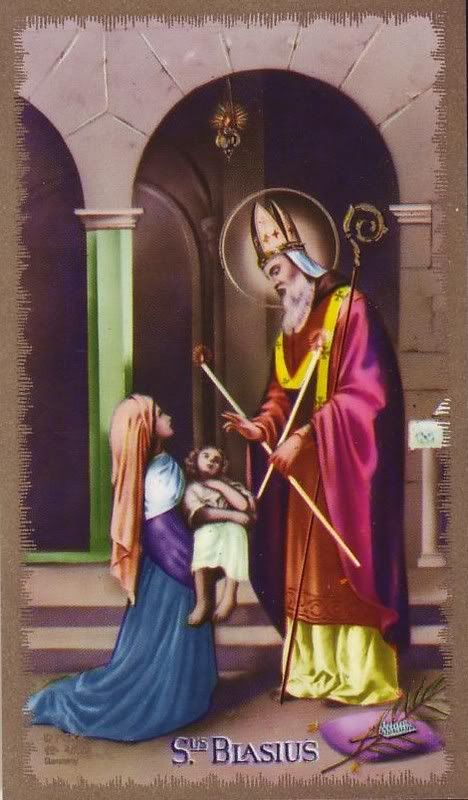
Here is what The Golden Legend has to say about St. Blaise, whose patronage is particularly efficacious for those suffering from disorders of the throat.
St. Blaise, please pray for us!
Labels: Our Saintly Brethern
Wednesday, February 02, 2011
Early Spring?
Punxatawney Phil, the Northeast's weather prognosticating rodent, on being chivvied from his burrow this morning, failed see his shadow (no surprise since a raging rain, snow, sleet, and freezing rain storm has been barrelling through the Northeast since yesterday morning, obscuring any hint of sunshine and leaving just the lights of TV cameras at Gobbler's Knob).
According to tradition, this means an early Spring, or that Spring-like conditions will begin to prevail around March 1st, rather than March 21st or April 1st.
One wonders about the efficacy of a forecast in Pennsylvania for New England. B ut if the groundhog were located in Pembrokme Mass., or Pelham, NH, or Providence RI, the result would have been tahe same: no shadow= early Spring.
To a Boston area that has taken repeated pastings from big snowstorms since Boxing Day, and where we have not had a single pleasant warm day since about a week before Thanksgiving, we can only hope the Rodent Is Right!
According to tradition, this means an early Spring, or that Spring-like conditions will begin to prevail around March 1st, rather than March 21st or April 1st.
One wonders about the efficacy of a forecast in Pennsylvania for New England. B ut if the groundhog were located in Pembrokme Mass., or Pelham, NH, or Providence RI, the result would have been tahe same: no shadow= early Spring.
To a Boston area that has taken repeated pastings from big snowstorms since Boxing Day, and where we have not had a single pleasant warm day since about a week before Thanksgiving, we can only hope the Rodent Is Right!
Labels: New England Things
Candlemas Day 2011
Candlemas Day
by Robert Herrick
Kindle the Christmas brand, and then
Till sunset let it burn;
Which quench'd then lay it up again
Till Christmas next return.
Part must be kept wherewith to tend
The Christmas log next year;
And where 'tis safely kept, the fiend
Can do no mischief there.
This poem describes the custom of taking down the last of the Christmas holly on Candlemas, and burning it. It should certainly be dry enough by now.
However, an alternate custom was to reserve the last of the holly and use it as kindling for the fire for the Shrove Tuesday pancakes. This year, that would mean keeping the dried-out holly around almost another 3 weeks.
This is the feast of the Purification of the Virgin, which, under Jewish Law comes 40 days after childbirth. And Candlemas is 40 days after Christmas. The Church also (rather oddly, I think) adds the Feast of the Presentation. Odd, because under Jewish Law, the baby Jesus would have been presented and circumcised on the eighth day after his birth, or the Octave of Christmas. So, there were two Temple-related events after the Nativity, the Presentation on January 1st, and the Purification or Churching of Mary, on February 2nd. The Holy Family must have remained in Bethlehem (though they probably moved out of the stable, as the Magi story speaks of a "house") to be close to Jerusalem and the Temple for these two events. It can only be after this that the Flight to Egypt and the Slaughter of the Holy Innocents took place.
How did Candlemas get its name? Today was the day to bring to church for blessing the year's supply of candles, especially candles with a semi-sacramental nature, like the candles placed in the window on Christmas Eve, Christmas Day, New Years, and Epiphany in Irish homes, candles for the Advent wreath, candles for the home sick visit kit, or candles used in home shrines.
One of the European superstitions connected with Candlemas was that a fair, clear Candlemas meant a longer winter, where a cloudy Candlemas would mean the end of winter was at hand. In Europe, the end of February is often quite spring-like, where here in the US (especially here in New England), it tends to be more wintery, as our seasons run about 3 weeks behind the European seasons.
Here is a German saying:
When it storms and snows on Candlemas Day,
Spring is not far away;
if it's bright and clear,
Spring is not yet near.
This gave rise to the legend that if the groundhog sees his shadow on February 2nd (now better known as Groundhog Day) it means 6 more weeks of winter (as opposed to only 4 more weeks if he does not see it).
Check out our friends at Fish Eaters for more on Candlemas customs.
Also, see The Golden Legend on the Purification of Our Blessed Lady.
by Robert Herrick
Kindle the Christmas brand, and then
Till sunset let it burn;
Which quench'd then lay it up again
Till Christmas next return.
Part must be kept wherewith to tend
The Christmas log next year;
And where 'tis safely kept, the fiend
Can do no mischief there.
This poem describes the custom of taking down the last of the Christmas holly on Candlemas, and burning it. It should certainly be dry enough by now.
However, an alternate custom was to reserve the last of the holly and use it as kindling for the fire for the Shrove Tuesday pancakes. This year, that would mean keeping the dried-out holly around almost another 3 weeks.
This is the feast of the Purification of the Virgin, which, under Jewish Law comes 40 days after childbirth. And Candlemas is 40 days after Christmas. The Church also (rather oddly, I think) adds the Feast of the Presentation. Odd, because under Jewish Law, the baby Jesus would have been presented and circumcised on the eighth day after his birth, or the Octave of Christmas. So, there were two Temple-related events after the Nativity, the Presentation on January 1st, and the Purification or Churching of Mary, on February 2nd. The Holy Family must have remained in Bethlehem (though they probably moved out of the stable, as the Magi story speaks of a "house") to be close to Jerusalem and the Temple for these two events. It can only be after this that the Flight to Egypt and the Slaughter of the Holy Innocents took place.
How did Candlemas get its name? Today was the day to bring to church for blessing the year's supply of candles, especially candles with a semi-sacramental nature, like the candles placed in the window on Christmas Eve, Christmas Day, New Years, and Epiphany in Irish homes, candles for the Advent wreath, candles for the home sick visit kit, or candles used in home shrines.
One of the European superstitions connected with Candlemas was that a fair, clear Candlemas meant a longer winter, where a cloudy Candlemas would mean the end of winter was at hand. In Europe, the end of February is often quite spring-like, where here in the US (especially here in New England), it tends to be more wintery, as our seasons run about 3 weeks behind the European seasons.
Here is a German saying:
When it storms and snows on Candlemas Day,
Spring is not far away;
if it's bright and clear,
Spring is not yet near.
This gave rise to the legend that if the groundhog sees his shadow on February 2nd (now better known as Groundhog Day) it means 6 more weeks of winter (as opposed to only 4 more weeks if he does not see it).
Check out our friends at Fish Eaters for more on Candlemas customs.
Also, see The Golden Legend on the Purification of Our Blessed Lady.
Labels: Our Blessed Lady
Tuesday, February 01, 2011
Saint Brigid Of Kildare
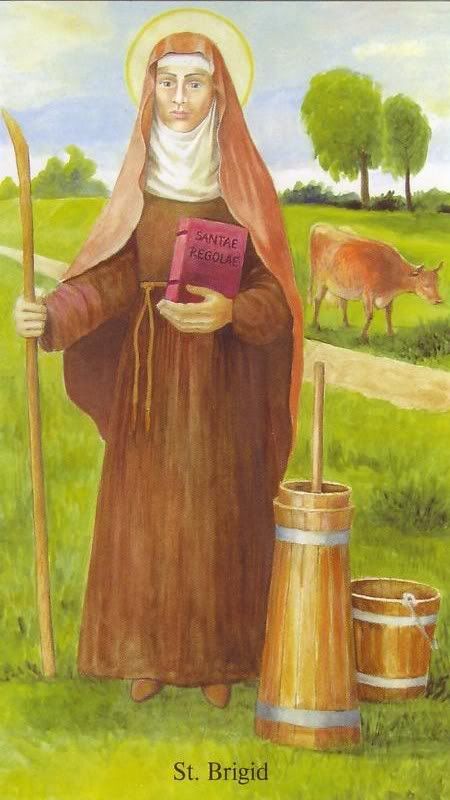
Here is a website on the beloved patroness of Ireland.
Included on a page, are 3 different methods for making a St. Brigid's Cross. I notice that the website has been moved since the last year, and the link for the directions on how to make the cross are now either not working accidentally, or deliberately omitted to get people to buy a book with the directions. I always wanted to try making this type of cross, but I doubt my skills at that sort of thing are equal to the task.
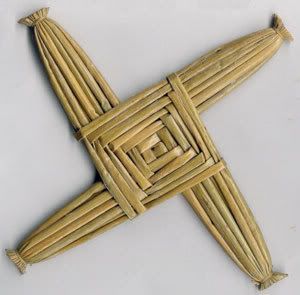
Interestingly. on another page of the site (scroll down, but take the time to peruse the entire page of seasonal customs, much of the information derived from the excellent The Year In Ireland by Kevin Danaher), there is yet another Luck Visit custom associated with St. Brigid's Eve.
In my various researches, I have come across numerous luck visit rituals (mostly) from the British Isles, and mostly associated with what we now call "the holidays," the period from Halloween through Candlemas. To jog the memory, I have discussed here Soulling, Trick-or-Treat, A Penny For the Guy, Something For Thanksgiving (apparently entirely American, though derived from British precedents), wassailling, carolling, John Canoe (again American, and particular to the slave population on Southern plantations), and the Plough Monday Ritual and play.
Irish folk used to go about with an effigy of Saint Brigid dressed in white, and offer this song in exchange for a gift of food, drink, or coin:
Something for poor Biddy!
Her clothes are torn
Her shoes are worn
Something for poor Biddy!
or
Here is Brigid dressed in white,
Give her a penny for her night
She is deaf, she is dumb
She cannot talk without a tongue.
or
Here comes Brigid dressed in white
Give her something for the night
She is deaf, she is dumb
For Gods sake give her some.
Note that among the Celts, and in Europe generally, February 1st is considered the beginning of Spring, where here in the Northeastern US, it is very much a cold, snowy winter month, with the first real hope for nice weather at least 6 weeks off, often longer.
But take heart! St. Brigid is our patroness, and her feast this year falls squarely during Carnival. So we can celebrate our Irishness with our patroness today!
Labels: Our Saintly Brethern
February 2011
Beacon Hill, Boston, buried under the snow
1st St. Brigid
2nd Candlemas, Purification of the Blessed Virgin Mother
3rd St. Blaise
5th St. Agatha
6th St. Vaast
7th Bl. Pope Pius IX
8th St. John of Matha
9th Bl. Anna Catherine Emmerich
10th St. Scholastica
11th St. Benedict of Aniane
12th Our Lady of Lourdes, Bl. James Fenn, John Nutter, John Munden, & Thomas Benstead (martyrs)
14th SS. Valentine, SS Cyril and Methodius
16th St. Gilbert of Sempringham & St. Julian of Nicomedia
17th St. Finan of Iona
18th St. Bernadette of Lourdes
23rd St. Peter Damian& St. Milburga
24th St. Matthias
27th Bl. Mark Barkworth and Roger Filcock (martyrs)
28th SS. Gregory II & Hilary (Popes)
The First Friday of February is Friday, February 4th.
The First Saturday of February is Saturday, February 5th.
This year, with Easter very late, February begins in the Season after Epiphany. Sunday February 20th is Septuagesima Sunday. The Deposito of the Alleluia takes place at Vespers of Saturday the 19th. Sunday the 27h is Sexagesima Sunday. Ash Wednesday does not occur until Wednesday March 9th.
This year, there is no Embertide in February.
Our Holy Father Piope Benedict XVI's published prayer intentions for February 2011 are:
General:
That the family may be respected by all in its identity and that its irreplaceable contribution to all of society be recognized.
Missionary:
That in the mission territories where the struggle against disease is most urgent, Christian communities may witness to the presence of Christ to those who suffer.
Labels: First Of the Month Almanac
Monday, January 31, 2011
Saint John Bosco

Read here Catholic Tradition's page on this saint.
Saint John Bosco, please pray for us!
Labels: Our Saintly Brethern
